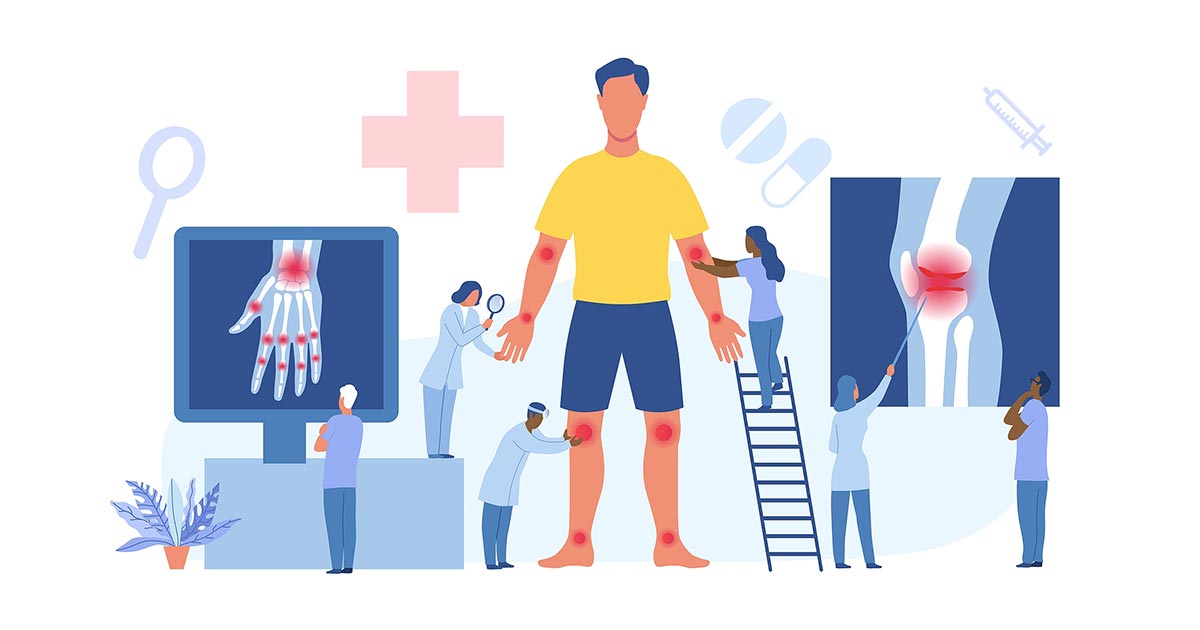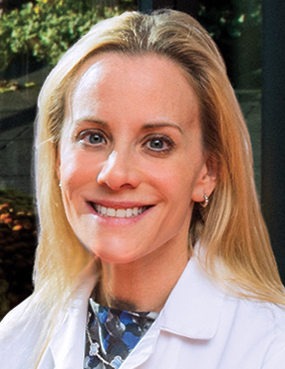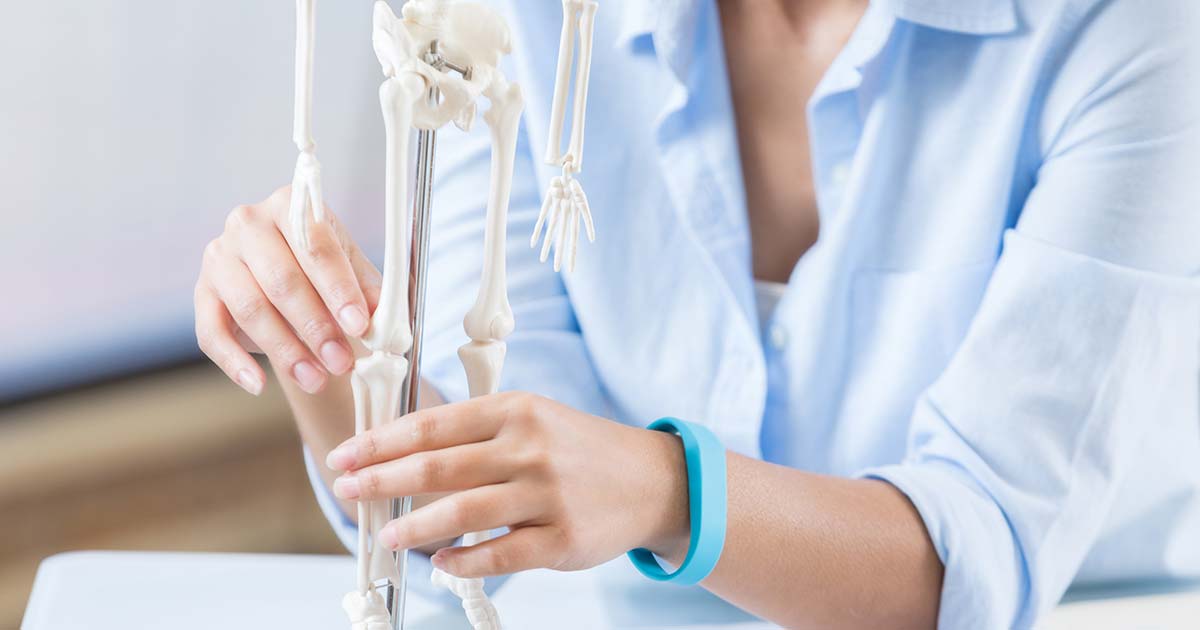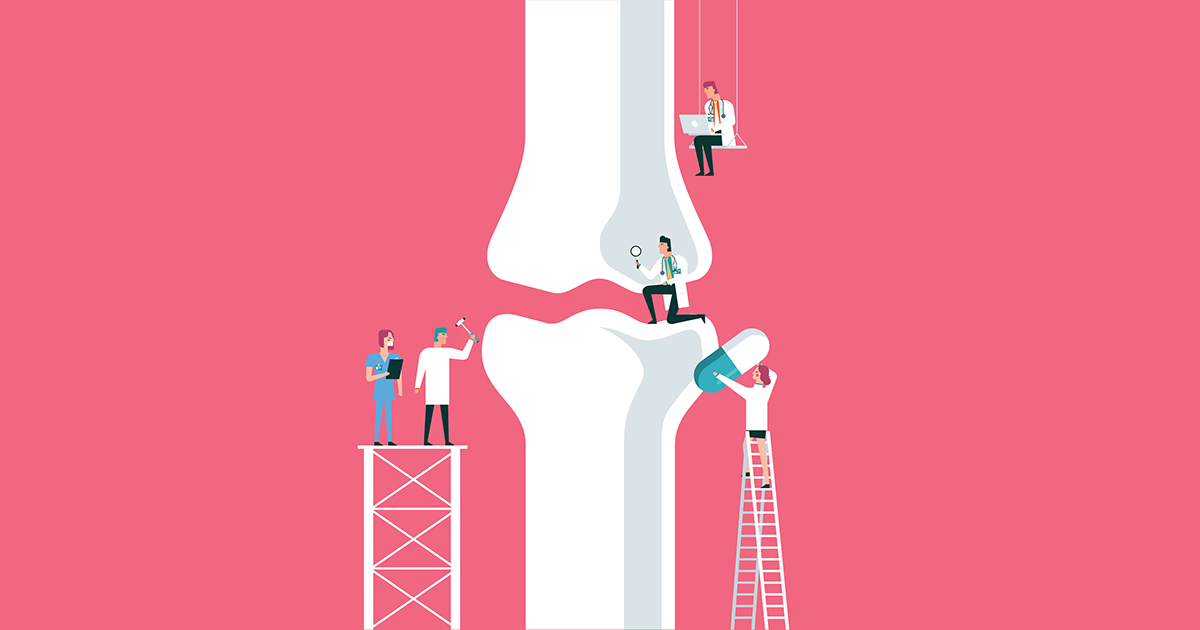Bone Density: What It Is and How to Keep What You’ve Got
Advice to improve your movement, fitness, and overall health from the world's #1 in orthopedics.
Did you know that all that milk you drank (or didn’t drink) as a kid has a huge impact on the health of your bones as an adult?
Put simply, your bone density is how porous your bones are. Think of it like a sponge scattered with small holes—the more space within the bone, the less dense it is. Bone density is vitally important as we age because less-dense bones are more likely to break, even from a routine, run-of-the-mill injury like tripping and falling off a curb.

When referring to a person’s bone density, doctors use the term “bone mass.” A person with low bone mass has low bone density; likewise for high bone mass. All of us are born with a predetermined amount of bone mass we will be able to build, determined largely by our genetics. But not all of us reach the peak of our bone mass potential.
“You’re pretty much set by the time you’re in your 20s,” says Alana Serota, MD, a metabolic bone disease specialist at HSS. “You have your genetically predetermined peak bone mass, but you may not hit it because you didn’t drink enough milk as a child, you didn’t exercise enough, you have an illness like Crohn’s disease—there are a lot of factors that can affect it.”
While you can’t do much to add to your bone mass in your later years, you can help protect what’s left. Here, Dr. Serota breaks down bone density testing, how to preserve your bone density, and how low bone density can affect your health.
What Is Bone Density Testing?
Bone density testing is done to measure the mineral density of the bones. You should be scanned at four sites of interest: four lumbar vertebrae, in the lower spine; the femur, or hip bone; the femoral neck, which is the skinny part of the hip bone; and the wrist.
The test will generate a number that is compared against one of two groups, depending on the patient:
- For postmenopausal women and men age 50 older, the T score is used, which measures them against an average, healthy 30-year-old adult.
- For premenopausal women and men younger than 50, there’s the Z score, which compares them to people of their own age and gender.
From there, your bone density will either be normal or you’ll receive a diagnosis of low bone density, or osteopenia; or osteoporosis, which is the lowest bone density. If your density is normal, you can wait up to 15 years for your next screening, unless there are changes to your health status.
There are a few other nuances as well. For example, it’s possible to have different bone density scores in different parts of the body. “The spine is the most metabolically active, which means it’s a spot that’s apt to lose bone density first,” says Dr. Serota. “There are also conditions that preferentially take bone from certain areas, like the wrist.”
But if you’re diagnosed with osteoporosis in one area, that means you have it everywhere. “The diagnosis is made based on the lowest score,” she adds. “Sometimes people will see on a report from their radiologist that they have osteopenia in one place and osteoporosis in another, but that’s wrong.”
When to Have Bone Density Testing
As far as when to have the test, the National Osteoporosis Foundation recommends having a bone density screening done if:
- you are a woman age 65 or older or a man age 70 or older
- you break a bone after age 50
- you are a woman of menopausal age with risk factors or a postmenopausal woman under age 65 with risk factors
- you are a man age 50 to 69 with risk factors
A bone density test may also be necessary if you have any of the following:
- an X-ray of your spine showing a break or bone loss in your spine
- back pain with a possible break in your spine
- height loss of ½ inch or more within one year
- total height loss of 1½ inches from your original height
Dr. Serota emphasizes the importance of going to a facility like HSS for testing, because the field is rapidly evolving, and expertise is needed to conduct the imaging and interpret the results correctly.
Maintaining Bone Density
While there may not be much you can do to bulk up your bones once you hit your 30s, there are some ways to hold on to what bone mass you have. The first of these is nutrition. While there’s no magic solution, Dr. Serota says, “you want to make sure you have a colorful diet with a lot of variety and that you have a protein source at most meals.”
As for supplements, calcium can be beneficial, but only if you’re not already getting enough from your diet. “With calcium, you need enough, but not too much,” she says. “If you’re a person who has a latte in the morning, a yogurt at lunch and cheese on your pasta at dinner, you probably don’t need any more. But if you’re totally dairy free, you probably do. It’s truly a supplement, not a treatment.”
What is hugely important for bone health is vitamin D, she adds. “Those of us in the northeast, or really anywhere at northern latitudes, should be taking some form of vitamin D. As we get older, our skin is less able to make sunlight into the vitamin D that we need. Also, many of the medications we take can also eat up our vitamin D, and there are conditions that cause a more rapid metabolism of vitamin D. Most people need some form of vitamin D supplement.”
There are supplements that should be avoided, however. One of those that has recently grown in popularity is strontium, which is often promoted as a bone-building treatment. According to Dr. Serota, this is false. “It makes your bones appear brighter on a bone density scan and look more dense, but it doesn’t actually make them stronger or denser.”
How Often to Get Your Bone Density Checked
If you receive a diagnosis of osteoporosis and begin treatment, redoing the scan depends on your course of treatment as well as how you respond to it.
“Patients who are on a standard treatment that is working for them are checked every two years, though some providers check yearly,” says Dr. Serota. “Patients who are young or are on chemotherapy or another type of treatment for a different illness might even be checked every six months. It really varies. The important part is to be sure you’re getting checked on the same machine, and that someone is overseeing your care.”
Treatments for Low Bone Density
The consequences of frail, low-density bones can be severe, so prompt treatment is recommended. The good news is that low bone density is easily treated once it’s identified. Most patients are put on a drug regimen, but some patients also benefit from hormone therapy or different drugs.
Unlike most chronic diseases like diabetes or high blood pressure, osteoporosis typically doesn’t require more than one drug to treat it. It’s the importance of regular treatment that matters. “People think, OK, I have osteoporosis, I’m just going to manage it with supplements and exercise,” says Dr. Serota. “That’s like saying, ‘I have a blockage in my heart, but I’m just not going to eat Big Macs anymore.’ Once you have a diagnosis, medications prescribed by a doctor are the best way to treat it.”
“More people sustain osteoporotic fractures per year than have heart attacks, strokes or breast cancer combined,” she adds. “Hip fractures in particular have very high mortality rates. You really want to prevent that first fracture.”
Published 10/15/2021





